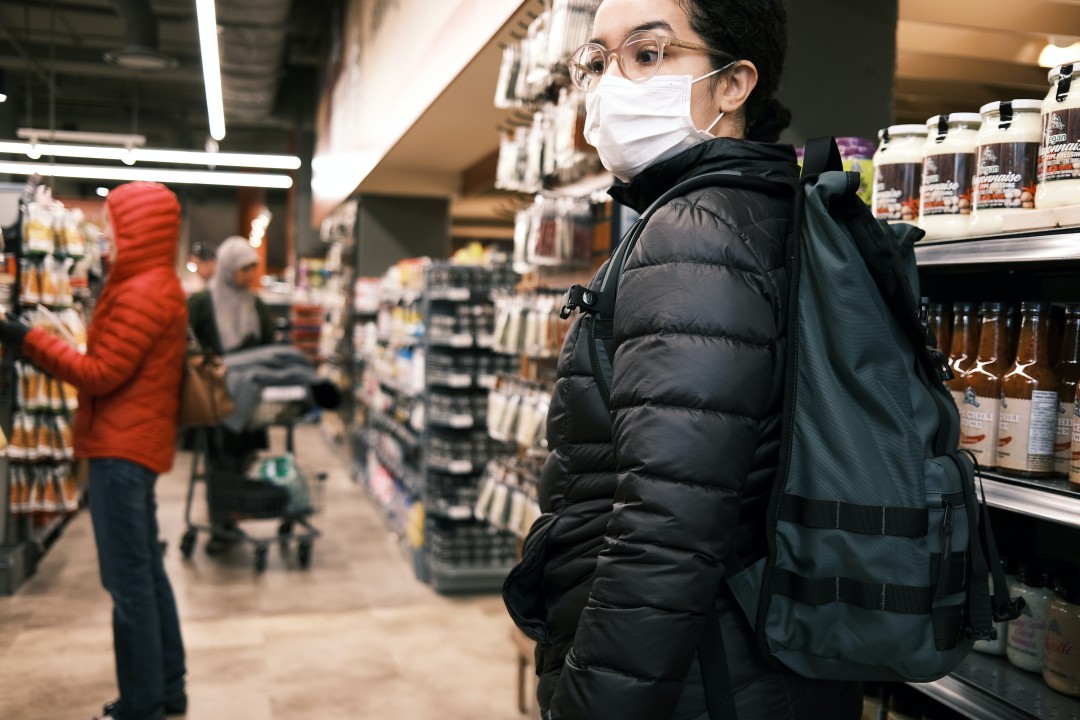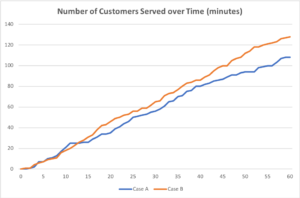Tips and Tricks for Dispersing Crowds
As the world slowly becomes accustomed to a new way of living, businesses are trying to cope with new social distancing measures in place. And as we limit spaces people can go to, essential businesses like grocery stores and pharmacies have an even greater role in limiting virus spread between customers.
As previously discussed in the last post, simply using square footage to determine how many people can safely visit a store is not enough. Rather, what stores must first start with is taking note of which areas tend to become the most crowded. In people flow management, these areas are often referred to as bottleneck areas. We have all had experiences with bottlenecks, especially in museums and other tourist-heavy attractions; in fact, it is what often stays in our mind most clearly after we leave (“Remember the crowd around the Mona Lisa?”). It is these areas today in stores where people are most at risk. As such, it is there that we want to minimize the amount of people to avoid both unpleasant crowding and accidental virus spread. In visitor flow practices, determining the amount of people a space can hold comfortably without creating bottlenecks is called determining carrying capacity.
Carrying capacity is simply figuring out how many people can comfortably fit within a space. As such, there can be different carrying capacities for specific areas and for the total area of the store. So, when trying to determine the safe amount of people to let in, it is important to take note of the different areas that experience bottlenecks. An obvious area in a grocery store might be the check-out line. However, this is not the only area that fills up with many people all at once. Today, it could be the cleaning supply aisle or the area right in front of the pasta and grains. This is not an exhaustive list: in order to properly address bottlenecks, store management should make note of where these areas are. Make sure to make observations on a variety of days as well—do Saturday afternoons tend to be more crowded? In that case, the store’s carrying capacity may shrink on those days.
Now that you have note of these spaces, there are two options. Using the calculations from the previous blog, you can determine a simple carrying capacity and let people in accordingly. Another option is to increase carrying capacity inside the store through dispersing or spreading out people in areas where crowding happens. For example, if a bottleneck area is happening around a particular item or group of items, management can spread these popular items throughout the store to avoid crowding. Another way to deal with crowding around certain products could be to expand the area where they are, so that multiple shoppers can pick up items at the same time. If a whole aisle or if multiple aisles are becoming an issue, a store may consider making certain aisles “one-way,” to eliminate crowding. They could also consider placing items generally found next to each other on opposite ends of the aisle: toilet paper and paper towels.
For bottlenecks around cashiers, make sure to have shorter queues by having the greatest amount of cashiers as possible while maintaining a safe distance between them. Lastly, if crowding is reduced in the store, it will actually help in serving more customers on an hourly basis. This has been proved by multiple runs through a simulation model with random movement and customers simulated. The following figure shows the number of customers served in a store with many bottleneck areas (Case A) versus a store with less bottleneck areas (Case B).
Figure 1: Number of customers served (y-axis) served over time in minutes (x-axis)
These techniques are important not only for present, but also the future, as more stores begin to open and will have to respect distancing guidelines. With the simple formula provided here and using the tips above, all stores will be able to keep their customers safe and contribute to the stopping of the virus’s spread.
Stay up to date KCG’s blogs here and for a more generalized plan on how to optimize ticketing queues, check out our previous blog.
If you or anyone you know is interested in learning more about these techniques and how to implement them, please contact us via LinkedIn or our website.


